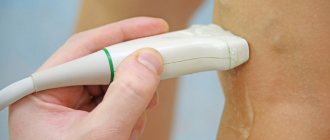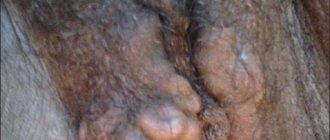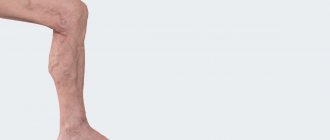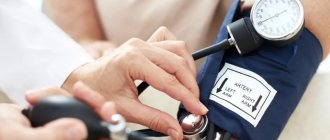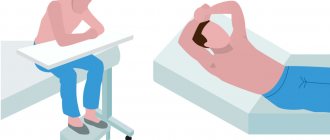The structure of human hands distinguishes him from representatives of other biological species. Thanks to them, we can not only serve ourselves, but also perform a wide variety of work. The fingers of the human hand are parts of the upper limbs, which in the process of development received a very important functional load. That's why, when your fingers hurt, it becomes difficult to hold a fork or spoon, type text on a PC, cook food, or even just lace up your shoes.
The reasons why your fingers hurt can be different. In addition to being susceptible to injury, there are a number of medical conditions that can affect their mobility. In addition, pain in the joints of the fingers can be caused by inflammatory processes (arthritis).
At CELT you can get advice from a specialist algologist.
Make an appointment
Causes of pain in fingers
If you want to find out why your fingers hurt, contact the CELT Pain Clinic. We employ experienced specialists of various profiles who will conduct a diagnostic study and prescribe the optimal course of treatment, thanks to which you can again live a full life.
Finger injuries
An injury such as a bruised finger can occur if you fall from a small height or hit your hand with a blunt object. Depending on the force of the impact, the skin and blood vessels may be damaged, which will lead to the formation of a hematoma; A bone fracture is also possible.
Carpal tunnel syndrome
The development of carpal tunnel syndrome is provoked by compression of the median nerve located in it. Clinical manifestations of this disease include:
- pain that is localized on the inner surface of the thumb;
- index finger pain;
- feeling of numbness in the skin of the palm;
- decrease in muscle volume in the area of the eminence of the first finger;
- decreased precision of fine motor skills of the hand.
Without timely treatment, the nerve will no longer be able to perform its functions, which will lead to the inability to perform small movements of the fingers and even disability.
Raynaud's syndrome
Raynaud's syndrome is a frequent companion to pathologies such as rheumatoid arthritis, scleroderma, and other connective tissue diseases. It occurs due to a violation of the tone of the capillaries and small arteries of the fingers and is characterized by the following symptoms:
- a sharp narrowing of blood vessels, leading to pallor of the skin of the fingers and numbness, which is often felt as pain;
- a sharp dilation of blood vessels, leading to redness of the skin of the fingers (even cyanosis) and a feeling of burning pain, swelling.
Polyosteoarthrosis
The joints of the fingers hurt with a pathology such as polyosteoarthrosis. Most often it occurs in women after 45 years of age. In addition to pain in small joints, it is characterized by the following:
- the presence of nodular formations that appear symmetrically on both hands;
- deformation of the hands;
- periodic inflammation, redness and swelling of the affected joints, which begins after overexertion.
Rhizarthrosis
Another disease that causes pain in the joints of the thumbs is rhizarthrosis. It affects the joint of the thumb and is accompanied by pain that becomes more intense during movements, crunching of the joint, deformation of the thumb bone, and limited movement in the affected joint.
Rheumatoid arthritis
A pathology such as rheumatoid arthritis is expressed in inflammatory processes of the metacarpophalangeal joints of the index and middle fingers. It can occur due to stress, hypothermia or acute respiratory disease and is characterized by the following clinical manifestations:
- intense painful sensations, often symmetrical on both arms and which are especially evident in the morning and in the second half of the night;
- swelling and redness of the joints and a local increase in skin temperature over them;
- inability to clench your hand into a fist;
- limited movements in the hands.
More about rheumatoid arthritis
If the patient has not completed the course of treatment, the hand may become deformed and its functionality will be completely lost.
Gouty arthritis
One answer to the question “Why do my toes hurt?” the answer may be: “Because of gouty arthritis.” In most cases, the joint of the 1st toe suffers from salt deposits, but often this disease also affects the joints of the hands. Symptoms include:
- sharp pain in the toes and hands;
- inflammations that occur in attacks, lasting from 3 to 10 days;
- redness and swelling of the joint;
- bluish discoloration of the skin over the affected joint.
If left to chance, the disease can cause joint destruction and hand deformation.
Read more about gouty arthritis
Veins appear on the arms
Anna, Ufa
March 28, 2021
Hello. According to the recommendations of the gynecologist, I took Midiana coc, I was supposed to take the drug for six months, but I only took it for 5 months because I began to experience symptoms that had not appeared before. Since February, I began to notice veins rapidly appearing on my arms. I saw a phlebologist in person, but he said that it was my venous pattern, but the veins came out in just a week and it looked creepy - all my arms were blue. While taking Midiana in February (i.e., the 5th month of taking it), I also began to experience dizziness and at the same time my veins began to pop out. Is it related? In October, before the appointment, I took a blood test for clotting, everything was normal. Is it worth retaking now? I feel that this is not just the norm for my body, I am sure that somewhere there is a clamp in the body (I go to an osteopath and yes, there are clamps, they are being removed little by little). It’s not just that I suddenly began to experience dizziness. There is grade 1 varicose veins of the lower extremities, the doctor said that the vein is not yet operable. After stopping contraceptives, I went to the phlebologist again, he said that according to the ultrasound, the condition of the veins had not worsened, everything was the same as it was before I started taking Midiana. In addition to the hands, I began to notice wreaths on the mammary glands and even on the décolleté. What to do? How to leave it? What tests should I take to identify the cause? At the moment I am “fighting” this in the following way: - I take Venarus 1000 mg (before this I took Detralex 1000 mg for 2 months) - I drink vitamin C plus rutin - I smear my hands with gels (911 venolgon, troxevasin, venotrox, heparin ointment (with this ointment I also smear the breasts and décolleté area) - I do a hand massage (as if rubbing the veins, making “nettles” on the hands) Before that, I took a contrast shower, but in the spring I began to catch a cold, so for now I have a regular comfortable shower. I directly associate the appearance of veins and dizziness with taking ok, the reduction in fatty tissue is immediately dismissed, since an additional side effect from Midiana is a brutal appetite, in February I even gained 2.5 kg (more precisely in 1.5 weeks) and this despite the fact that I go to fitness. My loads are moderate, aimed primarily at comfortable recovery, I don’t lift iron, even during the period of general excitement to “lose weight by summer,” so I don’t think that this was the reason. What should I do? I’m already thinking about even methods of alternative medicine, hirudotherapy, turpentine baths, solarium (I’m very pale myself, but the veins didn’t show up before) Thank you!
The question is closed
varicose veins
veins on the arms
mammary glands
taking hormonal hormones and varicose veins
Diagnosis of finger pain
CELT specialists recommend seeking medical help if you experience even a slight feeling of numbness in your fingers. Along with pain, this is a reason to visit a rheumatologist or neurologist in our Pain Clinic, conduct diagnostic tests and treatment.
In order to correctly make a diagnosis, in addition to a clinical examination and history taking, other diagnostic tests are carried out:
- radiography;
- manual muscle testing;
- ultrasonography;
- Magnetic resonance imaging.
2.Causes of leg pain
There are several categories of problems that can cause leg pain, discomfort and the other symptoms listed above. Let's try to figure it out in more detail.
Firstly, it may be problems with the skin of the legs
. Symptoms and the diseases that cause them may be:
- If while walking you feel as if you are walking on stones or pebbles, it may be plantar warts on the lower part of your foot;
- Areas of dense and hard skin on the heels may appear due to calluses, blisters on the skin or engorgement of the skin due to uncomfortable shoes, walking barefoot;
- Redness, peeling of the skin, burning and itching between the toes or on the bottom of the leg are signs of foot fungus (mycosis). Another possible cause is dermatitis due to the shoes you wear;
- Red, swollen, and tender skin around the nail may be symptoms of an ingrown toenail or nail infection (paronychia);
- Redness, swelling of the feet, pain in the feet when walking or touching are signs of a possible bacterial infection. You can become infected in public showers, swimming pools and other similar institutions.
The toe joints are a very vulnerable area.
. And it is with the joints of the toes that there are more problems than with any other joints in the body.
- Big toe joint pain, redness, swelling and tenderness that suddenly appears in the big toe joint can be caused by gout. The same symptoms can appear due to infection;
- If you have a swelling or lump at the base of your big toe, it may be a bunion;
- A lump on the outside of the little finger may be due to bunion;
- Toe joint pain, stiffness, and swelling are common symptoms of bunions, arthritis, lupus, or gout.
Foot pain may appear in the front of the foot or in the heel.
- Sharp pain in the bottom of the heel can be caused by plantar fasciitis;
- Pain in the back of the heel or ankle are symptoms of Achilles tendinitis, or as it is also called, Achilles tendinitis;
- Pain that worsens before or after exercise but improves during exercise may be caused by a broken bone in the leg (usually a metatarsal);
- Small bone spurs under the heel bone that cause heel pain may be a heel spur;
- Pain in the midfoot occurs due to flat feet;
- Pain in the back of the heel or a lump in this area is a symptom of a type of bunion.
Many diseases can affect the nerves of the foot
, causing foot pain, numbness, tingling and burning.
- Foot pain, burning, tingling, or numbness between the toes, especially between the third and fourth toes, and the same sensation in the forefoot may occur due to swelling or thickening of the nerve in the forefoot;
- Pain, numbness, or tingling that starts in the back or buttocks and moves down the leg may be caused by sciatica due to a pinched nerve;
- Weakness and pain in the ankle, which is often accompanied by numbness, can begin due to a pinched nerve in the ankle (tarsal tunnel syndrome) or sciatica;
- Burning in the legs, numbness and loss of sensation appear due to poor blood circulation. This problem is more common among people with diabetes or peripheral artery disease.
As you can see, the causes of leg pain, pain in the feet, ankles, toes, and other causes of discomfort in the legs can be very different. Therefore, if you experience symptoms such as pain in the legs, swelling of the legs, cramps in the legs, burning sensation, numbness, tingling in the legs and toes, paleness or blueness of the legs, you need to consult a good doctor. A specialist will help determine the cause of discomfort in the legs and tell you how to deal with them.
Visit our Therapy page
Treatment for finger pain
Treatment for pain in the fingers directly depends on the cause that caused them. Our specialists direct all their efforts to eliminating it, since this is the only way to achieve a long-term positive result and save the patient from suffering forever.
Systemic therapy with the use of non-steroidal anti-inflammatory drugs and analgesics can relieve inflammation and painful symptoms. In addition, for diseases such as osteoarthritis, drugs are used that improve the protective characteristics of cartilage. Massage, physiotherapy and manual therapy have a good effect.
Treatment at the CELT Pain Clinic allows you not only to eliminate pain, swelling and stop inflammatory processes, but also to strengthen your finger joints, normalize metabolism and blood circulation!
We will give you back the opportunity to live a normal life!
Make an appointment through the application or by calling +7 +7 We work every day:
- Monday—Friday: 8.00—20.00
- Saturday: 8.00–18.00
- Sunday is a day off
The nearest metro and MCC stations to the clinic:
- Highway of Enthusiasts or Perovo
- Partisan
- Enthusiast Highway
Driving directions
1.Pain in legs
Almost all people at some point in time experience problems with their legs - pain in the legs, pain in the feet, toes, ankles and other unpleasant sensations.
Why is this happening? In fact, there can be many reasons. Most of the time, our body movements do not cause any problems. But due to daily or too intense stress, a variety of leg diseases can develop. In addition, injuries and the natural aging process can cause discomfort and pain in the legs.
Your toes, feet, and ankles may experience burning, pain, fatigue, numbness, tingling, warmth, or coldness
.
muscle spasms
occur in the legs, especially at night when you sleep, and swelling of the legs.
The feet and ankles may become discolored, pale, or blue
.
There may be an unpleasant odor from your feet
.
Some of these symptoms are normal for older people or pregnant women. In this case, treatment at home is usually sufficient. In other situations, you need to find the cause of the problem and treat it.
Bemer therapy is a modern way to combat all types of pain. You can read more about Swiss physiotherapy in this section
Sign up for a consultation
A must read! Help with treatment and hospitalization!
3. Treatment of pain in the legs (ankles, feet, toes)
Treating leg pain at home often helps to cope not only with pain, but also with other symptoms - swelling of the legs, cramps, and discomfort. Treatment, as a rule, begins with eliminating the factors that caused pain in the legs.
and other unpleasant sensations.
For example, you should stop exercising at least temporarily if you experience pain in your legs (feet, ankles, or toes) during exercise. Physical activity “through pain” is contraindicated. It is important to wear high-quality and comfortable shoes. Arch supports and other orthopedic devices
will help make walking more comfortable.
Cold application, rest, foot massage, gentle and gentle exercises
(for example, for stretching tendons) will help cope with leg pain, leg swelling or cramps. To relieve leg pain, you can take over-the-counter pain medications.
For swelling of the legs, swelling of the feet and ankles
You can raise your swollen legs just above the level of your heart and sit like that for a while. If you have a sedentary job, get up and walk around for a few minutes every hour. Reduce your salt intake.
If your home treatments for leg pain (feet, ankles, toes), leg swelling, and other problems do not have the desired effect, consult your doctor. Consultation with a specialist is required
and when the pain and swelling intensify, signs of infection appear, the skin turns pale, tingling and numbness appear.
About our clinic Chistye Prudy metro station Medintercom page!
